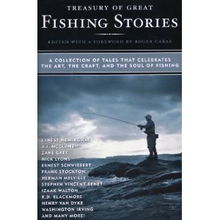Introduction:
Fishing, an ancient pastime, has evolved into a sophisticated sport that requires a blend of patience, skill, and knowledge. One of the most crucial aspects of successful fishing is mastering the art of bait preparation. The right bait can make the difference between a fruitful day on the water and a frustrating one. In this article, we will delve into the world of fishing, exploring various techniques and tips on how to prepare the perfect bait for your next fishing adventure.

Understanding Your Target Fish:
Before delving into the specifics of bait preparation, it's essential to understand the species you are targeting. Different fish species have varying preferences when it comes to bait. For instance, some fish are more attracted to live bait, while others prefer artificial lures. By knowing your target fish, you can tailor your bait to their preferences, increasing your chances of a successful catch.
Choosing the Right Bait:
Live Bait:
- Fish:
- Minnows, such as shiners or golden shiners, are popular choices for a variety of freshwater fish.
- Crickets and grasshoppers are effective for bass and panfish.
- Nightcrawlers are versatile and work well for many species, including catfish and bass.
- Insects:
Mayflies, terrestrials, and nymphs are excellent choices for fly fishing.
- Earthworms:
Red wigglers and nightcrawlers are among the most common earthworms used as bait.
- Fish:
Artificial Bait:
- Lures:
- Soft plastics, such as worms, grubs, and jigs, are versatile and come in various colors and sizes.
- Spinnerbaits and buzzbaits are effective for bass and panfish.
- Fly fishing lures, such as streamers and nymphs, mimic natural prey and are ideal for trout and salmon.
- Spoons:
Spoons are metal lures that mimic fish, leeches, or other prey and are effective for a wide range of species.
- Lures:
Preparing Your Bait:
Live Bait:
- Hooking Techniques:
- For minnows, place the hook through the mouth and out the back, ensuring the hook is set deep enough to prevent the minnow from wriggling free.
- When using earthworms, thread the hook through the middle of the worm, leaving the head and tail exposed.
- For crickets and grasshoppers, place the hook through the back and out the front, leaving the legs intact.
- Conditioning:
To keep live bait lively, keep it in a well-aerated container or tank with water.
- Hooking Techniques:
Artificial Bait:
- Rigging:
- For soft plastics, you can rig them on a straight hook or use a Texas rig, Carolina rig, or drop shot rig.
- When using spinnerbaits or buzzbaits, ensure the hooks are sharp and properly positioned.
- Painting:
To enhance the effectiveness of artificial lures, consider painting them with lure paint to match the water color or mimic prey.
- Rigging:
Using the Right Technique:
Presenting Your Bait:
- Natural Movement:
Mimic the natural movement of your bait by using a slow retrieve or a twitch-and-pause technique.
- Depth:
Adjust the depth of your bait by changing the weight or the length of the leader.
- Natural Movement:
Reading the Water:
- Current:
Work with the current rather than against it to present your bait more naturally.
- Structure:
Look for areas with structure, such as rocks, logs, or weeds, as these are often prime spots for fish.
- Current:
Conclusion:
Mastering the art of bait preparation is a skill that can significantly impact your fishing success. By understanding your target fish, choosing the right bait, and using the proper techniques, you can improve your chances of landing that big catch. Whether you prefer live bait or artificial lures, the key is to experiment, learn from your experiences, and adapt your approach to the conditions and the fish you're targeting. Happy fishing!












